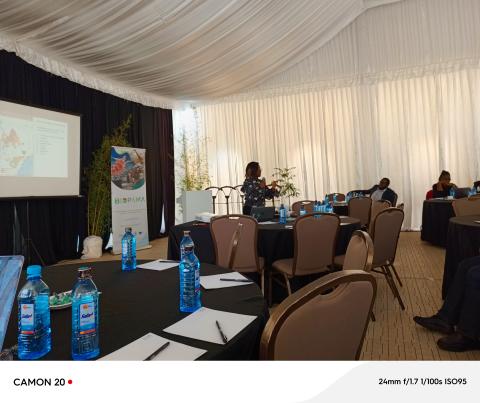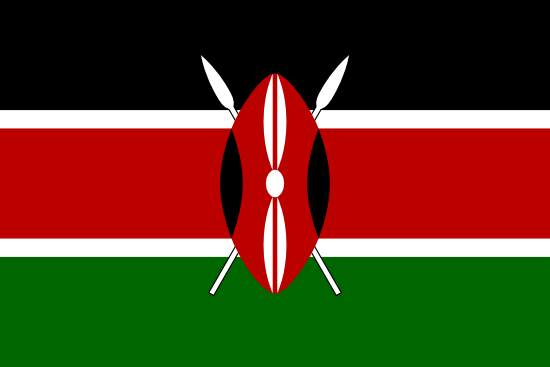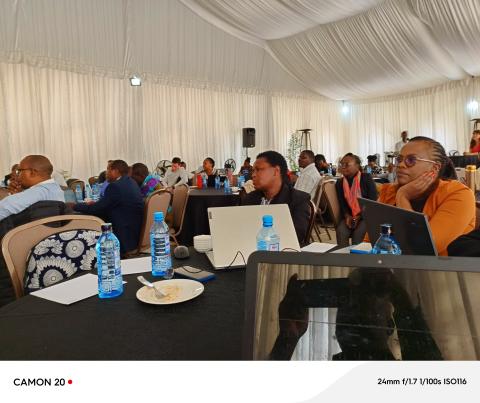National Dialogue on Other Effective Area-Based Conservation Measures (OECMs): A Collaborative Path to 30 by 30 in Kenya

In a significant step toward advancing Kenya's biodiversity goals, the State Department for Environment and Climate Change, together with strategic partners, organized a National Dialogue on Other Effective Area-Based Conservation Measures (OECMs). This dialogue, took place on November 12th and 13th, 2024, in Nairobi, brought together a diverse range of stakeholders to revisit and reenergize the OECM framework, which plays a crucial role in the global 30 by 30 conservation target of the Kunming-Montreal Global Biodiversity Framework (KMGBF).
Kenya has been at the forefront of pioneering the OECM framework at a national level. In June 2017, the country hosted an early workshop in Nairobi to review draft OECM guidelines, setting the stage for a rapid review in 2018 of Kenya’s legislative support for OECMs. This early groundwork laid the foundation for a robust framework and inspired the initial momentum to adopt OECMs as a tool for conservation beyond traditional protected areas. However, the Covid-19 pandemic and other factors temporarily slowed these efforts.
The concept of OECMs was formally included in the zero draft of the post-2020 Global Biodiversity Framework, generating renewed interest in identifying, recognizing, and supporting areas that contribute to biodiversity conservation. The updated framework, formally known as the Kunming-Montreal Global Biodiversity Framework, calls for protecting 30% of the world’s lands, waters, and oceans by 2030—a goal commonly referred to as "30 by 30." OECMs are integral to achieving this ambitious target, as they encompass diverse, effectively managed areas that conserve biodiversity outside formally designated protected regions.
In October 2021, the United Nations Environment Programme World Conservation Monitoring Centre (UNEP-WCMC) reached out to stakeholders across government and non-government sectors in Kenya through a survey to gather insights on OECMs. This was followed in December 2021 by a consultative meeting hosted by the International Union for Conservation of Nature Eastern and Southern Africa Office (IUCN ESARO) with key government ministries and non-governmental organizations. These initial discussions brought to the fore the need for a collaborative, multi-sectoral approach to OECM recognition, the importance of creating a supportive legal environment, and the potential of a national dialogue to create momentum for OECMs in Kenya.
Now, as Kenya aligns with the KMGBF, this upcoming National Dialogue offers a unique opportunity to capitalize on these early efforts. It is an invitation for a broad coalition of actors from terrestrial and marine conservation, government agencies, and non-governmental organizations to strategize on ways to advance OECMs as part of Kenya’s biodiversity goals.
Participants will engage in sessions that deepen their understanding of OECMs, explore their contributions to achieving conservation goals, and identify pathways for scaling up OECM recognition across the country. This dialogue is expected to inspire inclusive and innovative approaches to conservation, promote knowledge-sharing, and strengthen the support systems needed to recognize and enhance areas beyond traditional protected sites.
The State Department for Environment and Climate Change, in collaboration with its partners, envisions that the National Dialogue will lay the groundwork for OECMs to become an essential component of Kenya's 30 by 30 targets under the KMGBF. By fostering collaboration and mutual understanding among diverse stakeholders, this event represents a critical step forward in Kenya’s journey toward protecting its invaluable natural heritage for present and future generations.
IUCN-TNC OECM Technical Guidance_Kenya Nov 2024.pdf
iucn_wcpa_technical_note_series_no._6.pdf
Past and existing work on OECMs in Kenya.pdf
Kenya OECMs Legislative Review Report - IUCN Submitted 2024.pdf
Site-level tool for identifying other effective area-based conservation measures (OECMs).pdf

